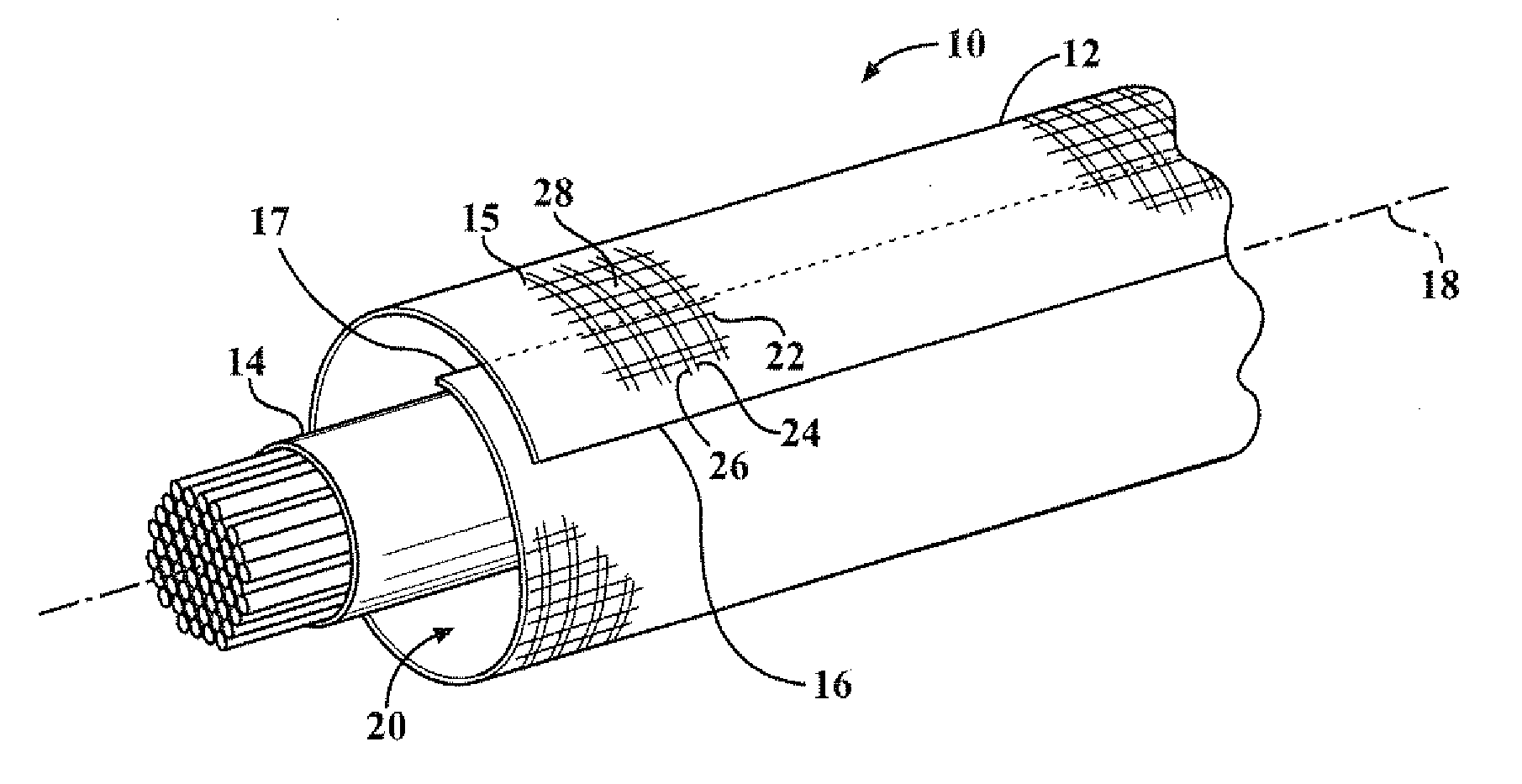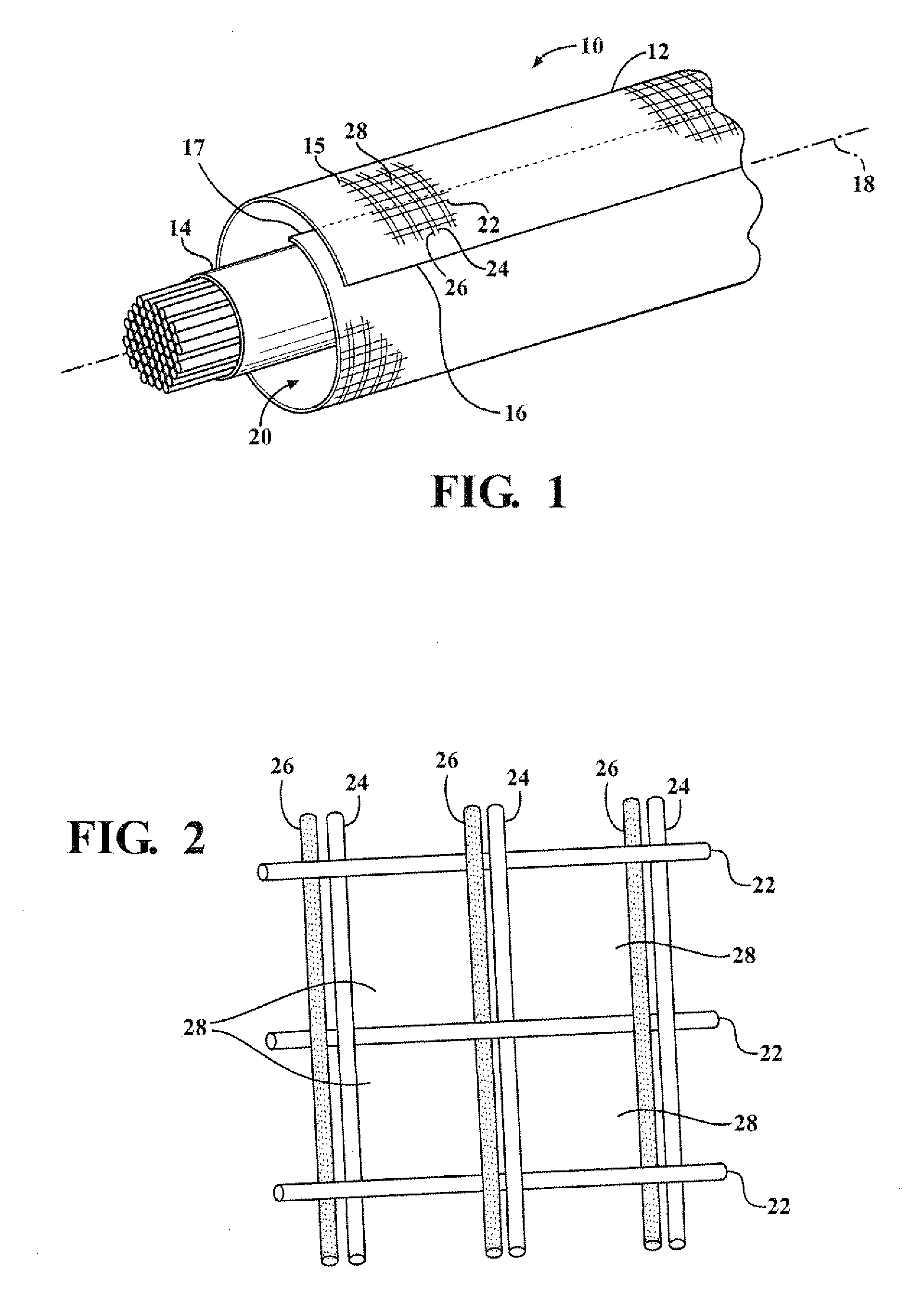Flexible, abrasion resistant textile sleeve and method of construction thereof
a technology of textile sleeves and abrasion resistance, applied in the field of flexible, abrasion resistant textile sleeves and their construction, can solve the problems of requiring an increased volume of space, exhibiting limited flexibility, and causing damage, and achieve the effect of enhancing protection and being economical in manufactur
- Summary
- Abstract
- Description
- Claims
- Application Information
AI Technical Summary
Benefits of technology
Problems solved by technology
Method used
Image
Examples
Embodiment Construction
[0013]Referring in more detail to the drawings, FIG. 1 shows schematic representation of a woven, self-wrapping textile sleeve, referred to hereafter as sleeve 10, constructed in accordance with one aspect of the invention. The sleeve 10 has a self-wrapping elongate wall 12 for routing and protecting elongate members, such as wires or a wire harness 14, for example, from exposure to abrasion and the ingress of contamination, debris and the like. The elongate wall 12 has opposite edges 16, 17 extending generally parallel to a central, longitudinal axis 18, wherein the edges 16, 17 are preferably biased into overlapping relation with one another in “cigarette wrapped” fashion to fully enclose the elongate members 14 within a central cavity 20 of the sleeve. The cavity 20 is readily accessible along the full length of the longitudinal axis 18 so that the elongate members 14 can be readily disposed radially into the cavity 20, and conversely, removed from the cavity 20, such as during s...
PUM
| Property | Measurement | Unit |
|---|---|---|
| diameter | aaaaa | aaaaa |
| width | aaaaa | aaaaa |
| wall thickness | aaaaa | aaaaa |
Abstract
Description
Claims
Application Information
 Login to View More
Login to View More - R&D
- Intellectual Property
- Life Sciences
- Materials
- Tech Scout
- Unparalleled Data Quality
- Higher Quality Content
- 60% Fewer Hallucinations
Browse by: Latest US Patents, China's latest patents, Technical Efficacy Thesaurus, Application Domain, Technology Topic, Popular Technical Reports.
© 2025 PatSnap. All rights reserved.Legal|Privacy policy|Modern Slavery Act Transparency Statement|Sitemap|About US| Contact US: help@patsnap.com


